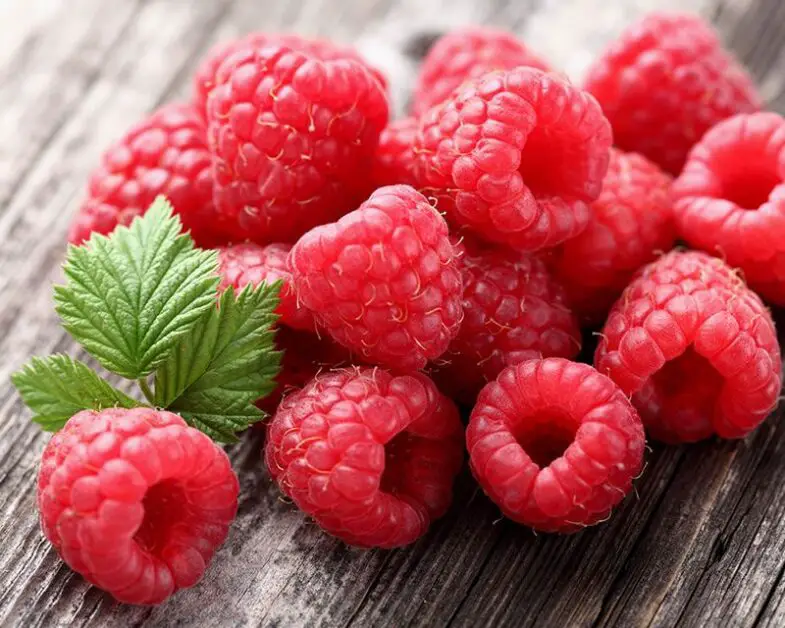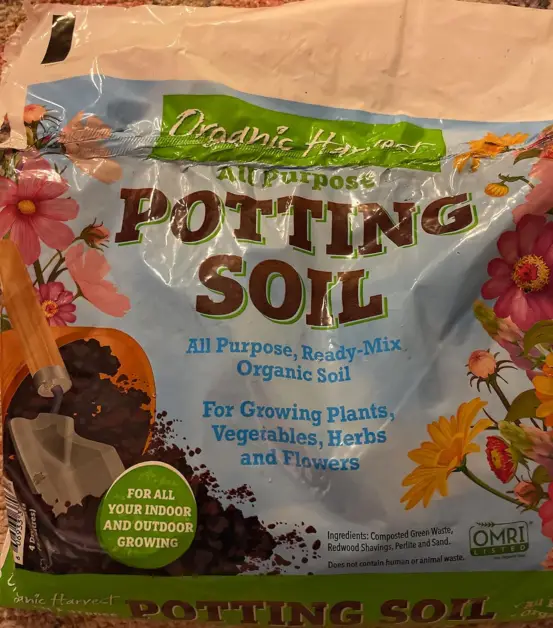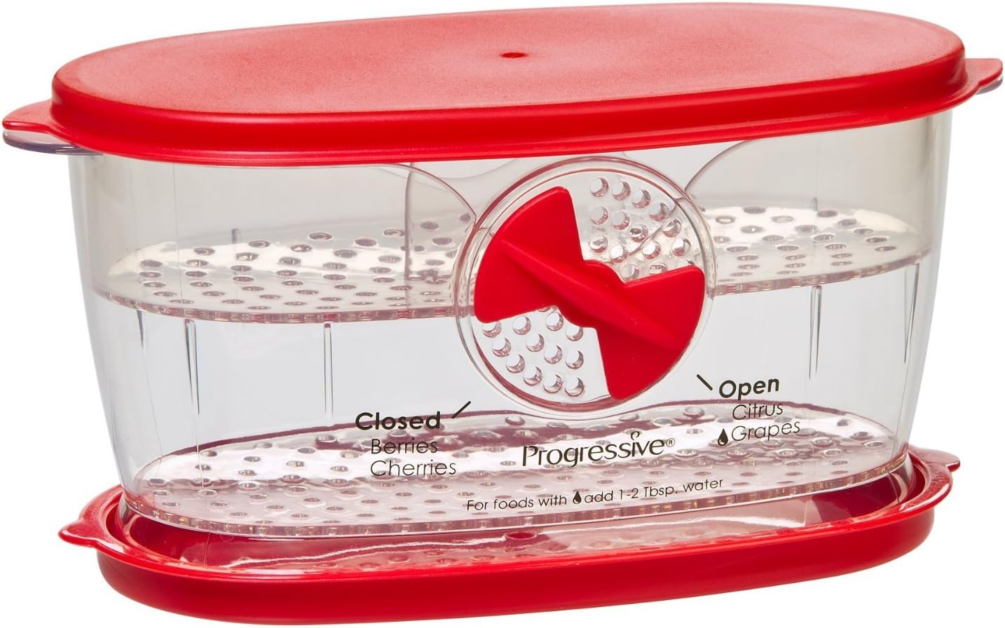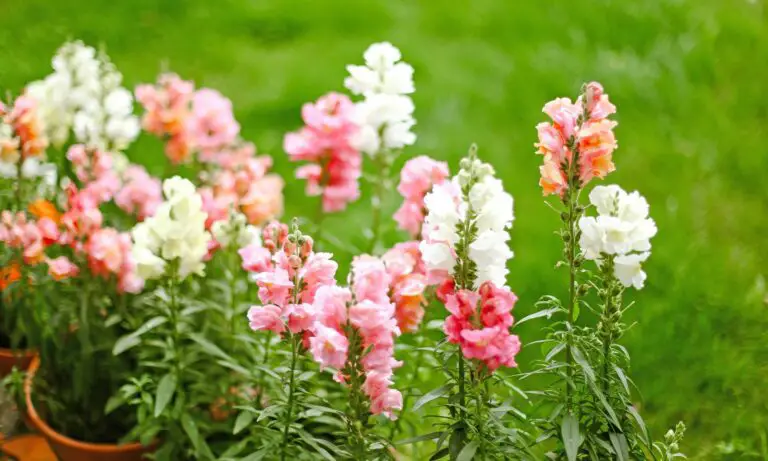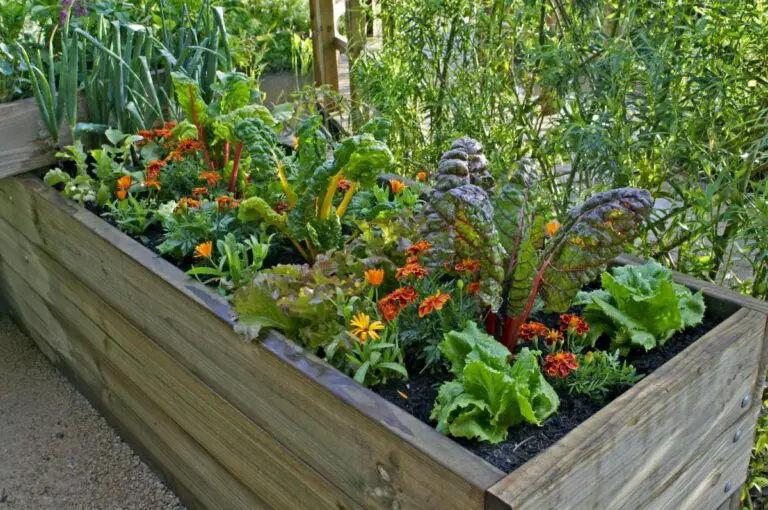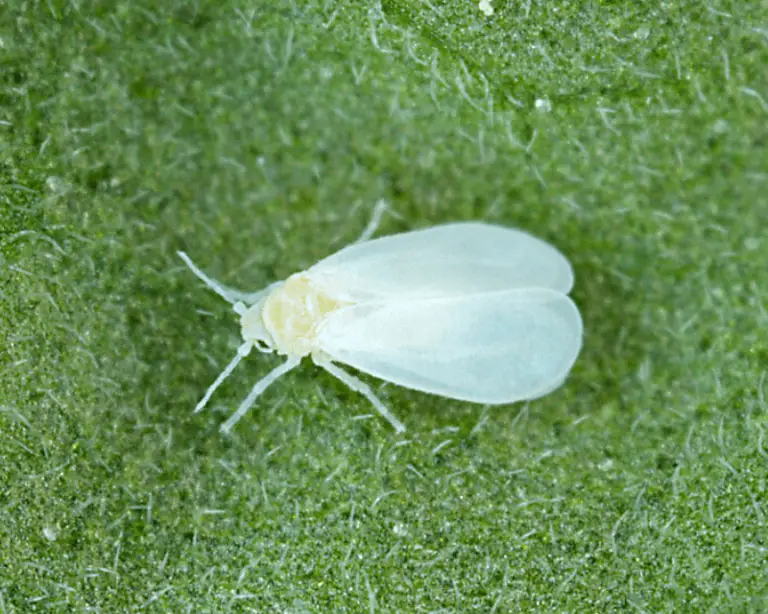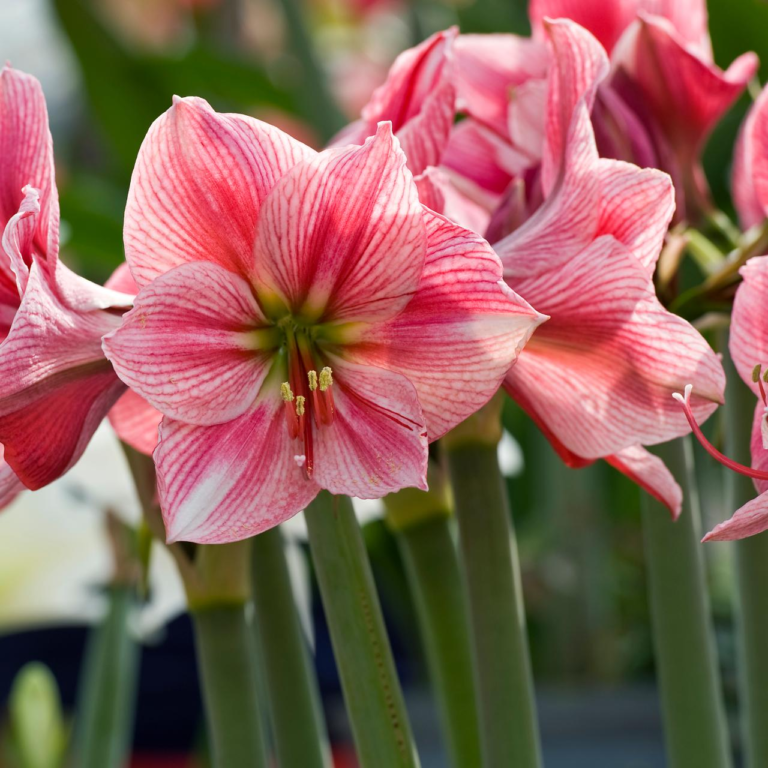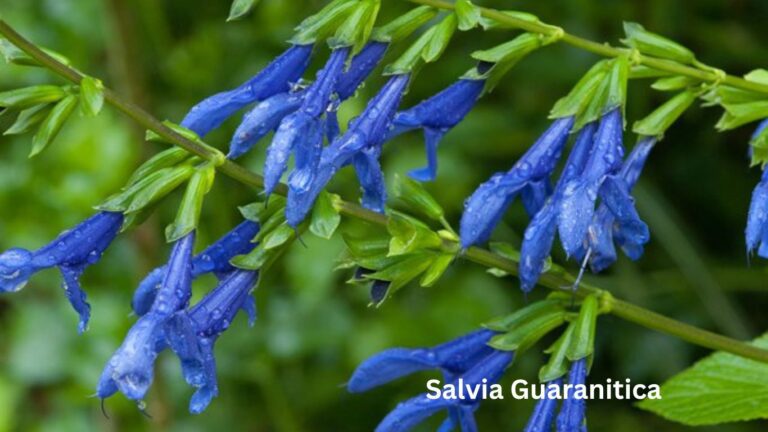Raspberry Raised Bed Tips: Getting Things Growing
Are you ready to elevate your raspberry growing game to new heights? Picture this: plump, juicy raspberries ripe for the picking, all from your very own raised bed. In this blog, we delve into the art of raspberry cultivation in raised beds, sharing expert tips and tricks to help you achieve a flourishing berry patch. From soil preparation to optimal spacing and maintenance, we’ve got you covered.
Say goodbye to lackluster harvests and hello to a bounty of delicious raspberries. Get ready to transform your gardening experience with our essential advice. Let’s dive in and watch your raspberry dreams come to life!
Table of Contents
Tips for Choosing the Right Raspberry Varieties
When selecting the ideal raspberry varieties for your garden, it’s essential to consider factors such as climate, soil conditions, and intended use.

- Regional Suitability:
- Research raspberry cultivars that thrive in your specific climate and growing conditions. Some varieties may be better suited for colder regions, while others can handle warmer climates.
- Consider factors such as frost tolerance, heat resistance, and disease resistance when choosing raspberry varieties.
- Fresh Consumption vs. Processing:
- Determine your primary purpose for growing raspberries. Are you aiming for fresh consumption or planning to process them into jams, desserts, or other products?
- Varieties with excellent flavor and texture are ideal for fresh eating, while those with higher yields and good storage properties are better for processing.
- Fruit Size and Flavor Profile:
- Raspberry berries come in various sizes, from small to large. Consider your preference for berry size.
- Flavor profiles can vary significantly. Some raspberries are sweet and juicy, while others have a more tart or complex taste. Taste test different varieties if possible.
- Ripening Season:
- Raspberry varieties fall into three main ripening categories: early, mid-season, and late-season.
- By selecting a mix of these categories, you can enjoy fresh raspberries over an extended period. Early varieties provide fruit sooner, while late-season ones extend the harvest.
- Visual Interest and Diversity:
- Planting a diverse range of raspberry types can add visual interest to your hydroponic garden.
- Explore different colors (red, yellow, black, and purple) to create an appealing and vibrant display.
Remember to consult local gardening resources or experts to find raspberry varieties that specifically suit your hydroponic setup and preferences. Happy raspberry growing! 🌱🍓
Selecting the Ideal Location for Your Raspberry Raised Bed
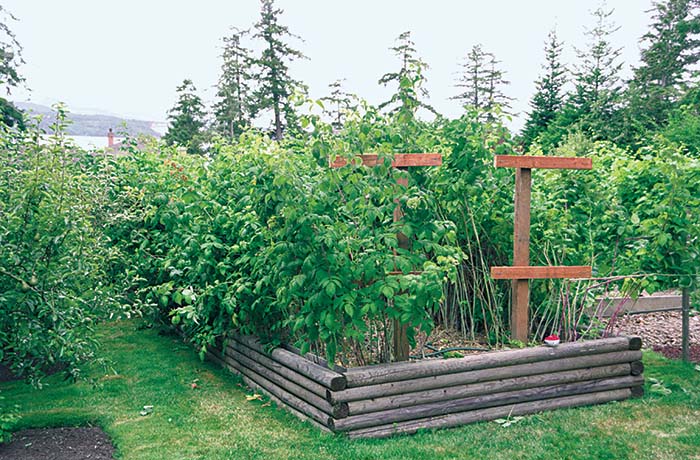
Here are the key points for setting up a raspberry raised bed:
By following these points, you can create a successful raspberry raised bed.
Preparing the Soil for Raspberry Planting
To prepare the soil for planting raspberries, it is essential to ensure that the area gets sufficient sunlight and has well-draining soil.
The following table explains about the preparing the soil for raspberry planting:
| Step | Description |
|---|---|
| 1. Site Selection | Choose a site with full sun and well-drained soil. Avoid areas where raspberries or other brambles have been grown in the past. |
| 2. Soil Testing | Test the soil to determine its pH and nutrient levels. Raspberries prefer a pH between 6.0 and 6.5. |
| 3. Soil Amendment | Based on the soil test results, amend the soil with organic matter (like compost or well-rotted manure) and any necessary soil amendments to adjust pH and improve fertility. |
| 4. Tilling | Till the soil to a depth of at least 12 inches to break up compacted soil and improve root penetration. |
| 5. Bed Preparation | Form raised beds if necessary to improve drainage. Beds should be about 2 feet wide and 8 inches high. |
| 6. Mulching | Apply a layer of mulch to conserve moisture, suppress weeds, and add organic matter to the soil. |
Remember, proper soil preparation is key to growing healthy, productive raspberry plants.
I’ve been using the Organic Harvest Potting Mix for Vegetables in my garden for a while now, and I must say, it’s been a game-changer, especially for my raspberry plants.The first thing I noticed was the texture of the soil. It’s light and fluffy, providing excellent aeration, which is crucial for the root development of my raspberry plants. The mix is rich in organic matter, which I believe has significantly improved the fertility of my garden soil.
My raspberry plants have shown remarkable growth since I started using this potting mix. The leaves are a vibrant green, and the plants are producing an abundance of fruit. The raspberries are plump, juicy, and bursting with flavor, which I attribute to the nutrient-rich nature of this potting mix.What I appreciate most about this product is its organic composition. Knowing that I’m not introducing any harmful chemicals into my garden gives me peace of mind. It’s not just beneficial for my plants but also for the environment.
In conclusion, the Organic Harvest Potting Mix for Vegetables has proven to be an excellent choice for my garden, particularly for my raspberry plants. I would highly recommend it to any gardener looking for an organic and effective solution for their garden.
- Environmentally friendly: Made from organic and recycled ingredients.
- Contains beneficial components: Peat moss, wood shavings, composted green waste, and perlite.
- Convenient: No need to remove weeds, simplifying gardening tasks.
- Safe: Does not contain human or animal waste, ensuring a clean and safe gardening experience.
- Lightweight and porous: Facilitates excellent root penetration, air circulation, and water drainage, promoting healthy plant growth.
- Mixed customer opinions on value for money: Some customers feel that the product is expensive for the quantity provided.
- Quality control issues: Some customers reported receiving bags with open packaging or encountering fungus gnats in the soil.
- Size limitations: The quantity may be insufficient for larger gardening projects, leading to additional expenses or the need to purchase more bags.
- Potential for mushroom growth: Some customers experienced the emergence of mushrooms after planting, which may not be desirable for all gardeners.
Building the Perfect Raised Bed for Raspberries
When it comes to building the perfect raised bed for your raspberry plants, there are a few key considerations to keep in mind. To create an ideal environment for raspberry plants in a raised bed, follow these steps:
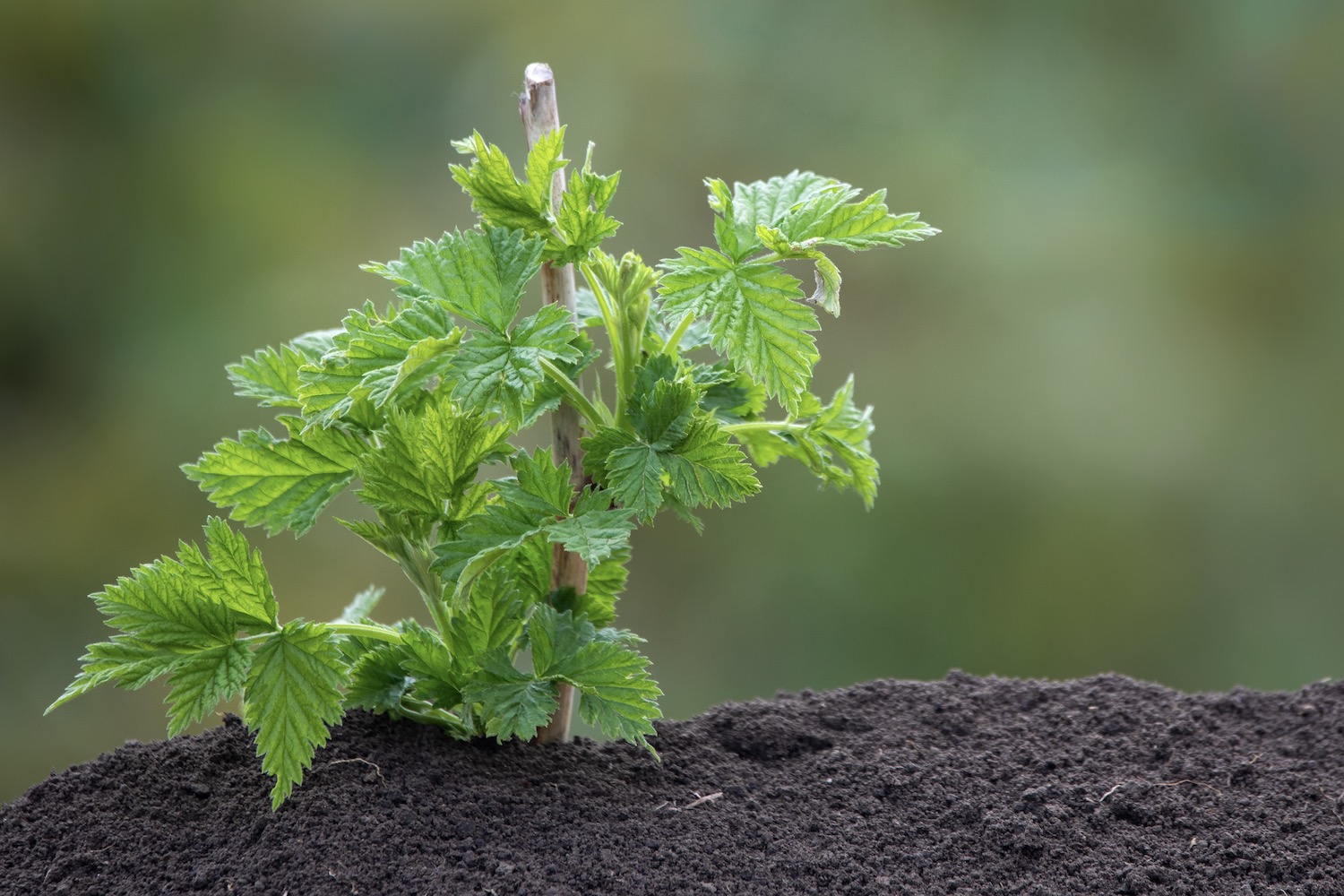
By following these tips, you can create an optimal environment for your raspberry plants to thrive and produce abundant fruit.
Spacing Your Raspberry Plants Properly
When spacing your raspberry plants, it is essential to give them enough room to thrive and produce a bountiful harvest.
- Recommended Spacing: Plant raspberry plants approximately 2-3 feet apart to allow for sufficient air circulation, sunlight exposure, and easy maintenance tasks like pruning and harvesting.
- Benefits of Proper Spacing: Adequate spacing promotes overall plant health and vitality by reducing the risk of disease and pest spread among plants.
- Consider Variety Requirements: Different raspberry cultivars may have specific spacing requirements based on their growth habits (e.g., spreading or upright canes). Consult guidelines from the raspberry nursery or breeders to determine ideal spacing for your chosen variety.
- Setting Up for Success: Giving raspberry plants the appropriate space they need maximizes their growth potential and sets them up for success in your garden or orchard.
By giving your raspberry plants the appropriate space they need, you are setting them up for success and maximizing their growth potential.
Planting Your Raspberry Starts or Seedlings
When planting your raspberry starts or seedlings, it is essential to choose a sunny location with well-drained soil for optimal growth.
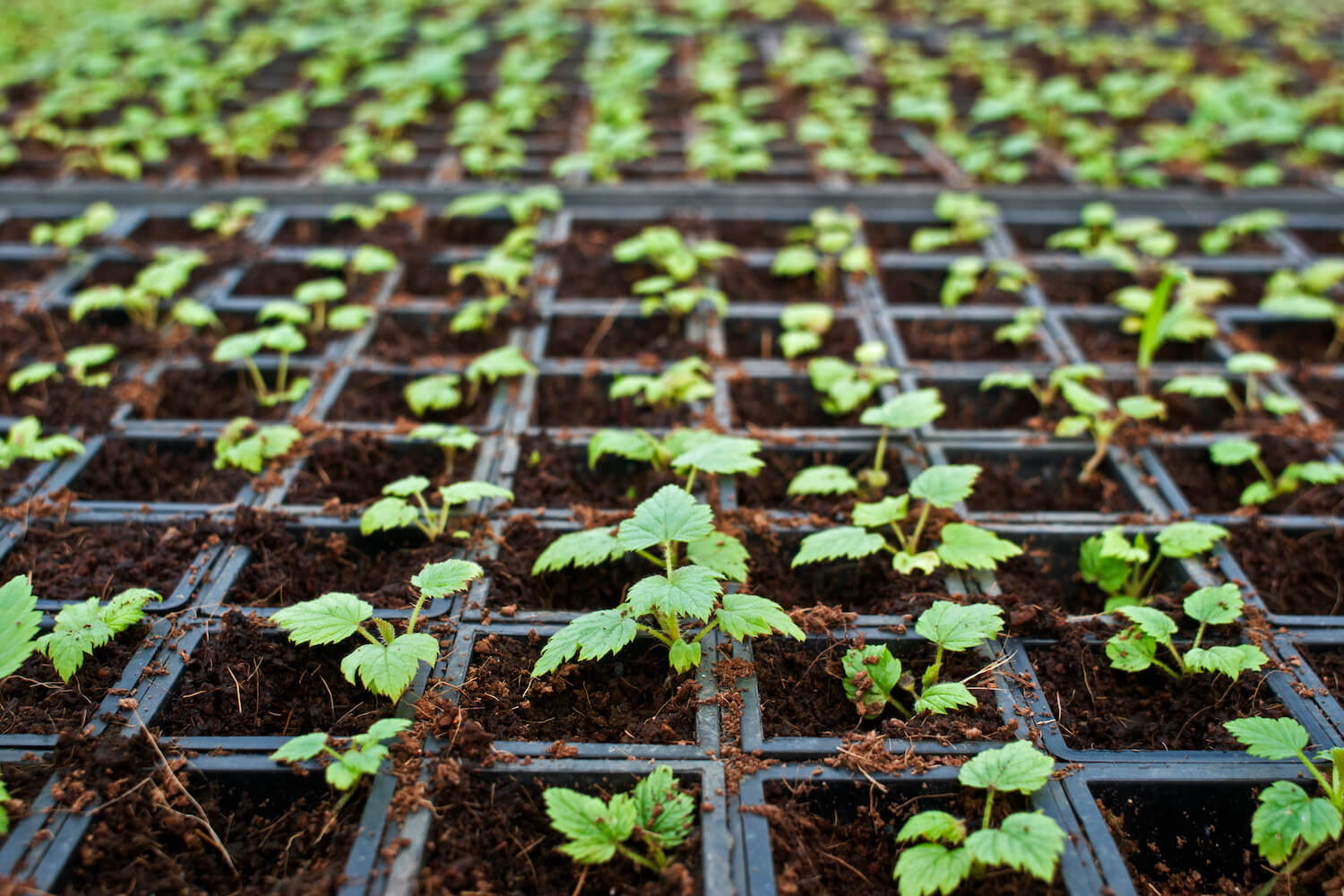
- Sunny Location: Choose a sunny location with well-drained soil for optimal raspberry growth.
- Sunlight Requirements: Raspberry plants thrive in full sunlight, requiring at least 6-8 hours of direct sunlight per day.
- Soil Preparation: Prior to planting, loosen the soil to a depth of 8-12 inches and remove weeds or debris. Incorporate organic matter like compost or aged manure to improve soil fertility and drainage.
- Planting Depth: Set raspberry starts or seedlings at the same depth as they were in their original containers.
- Firm Soil: Gently firm the soil around the plants to eliminate air pockets and provide stability.
- Watering: Water thoroughly after planting to help roots establish. Maintain consistent moisture levels throughout the growing season to support healthy growth and fruit production.
Providing Adequate Watering for Your Raspberries

Here are the simplified steps for watering raspberry plants:
- Consistent Moisture: Keep the soil evenly moist but not waterlogged.
- Watering Amount: Water your raspberries about 1-2 inches per week, either through rainfall or irrigation.
- Watering Method: Water at the base of the plants to prevent leaf wetness and fungal diseases. Using a soaker hose or drip irrigation system can be helpful.
- Monitor Soil Moisture: Check the moisture levels in the soil regularly, especially during hot and dry periods.
In addition to these steps, consider the following tips:
- Mulching: Apply a layer of mulch around the plants. This helps retain soil moisture and suppress weeds.
- Fertilizing: Use a balanced fertilizer to promote healthy growth and fruit production. Follow the package instructions for application rates and timing.
- Pruning: Regularly prune your raspberry plants. This helps improve air circulation, reduce disease problems, and promote better fruit production.
By following these watering practices and care tips, you can help your raspberry plants thrive and produce a bountiful harvest.
Fertilizing Your Raspberry Plants for Optimal Growth
To ensure optimal growth and yield from your raspberry plants, proper fertilization is essential.
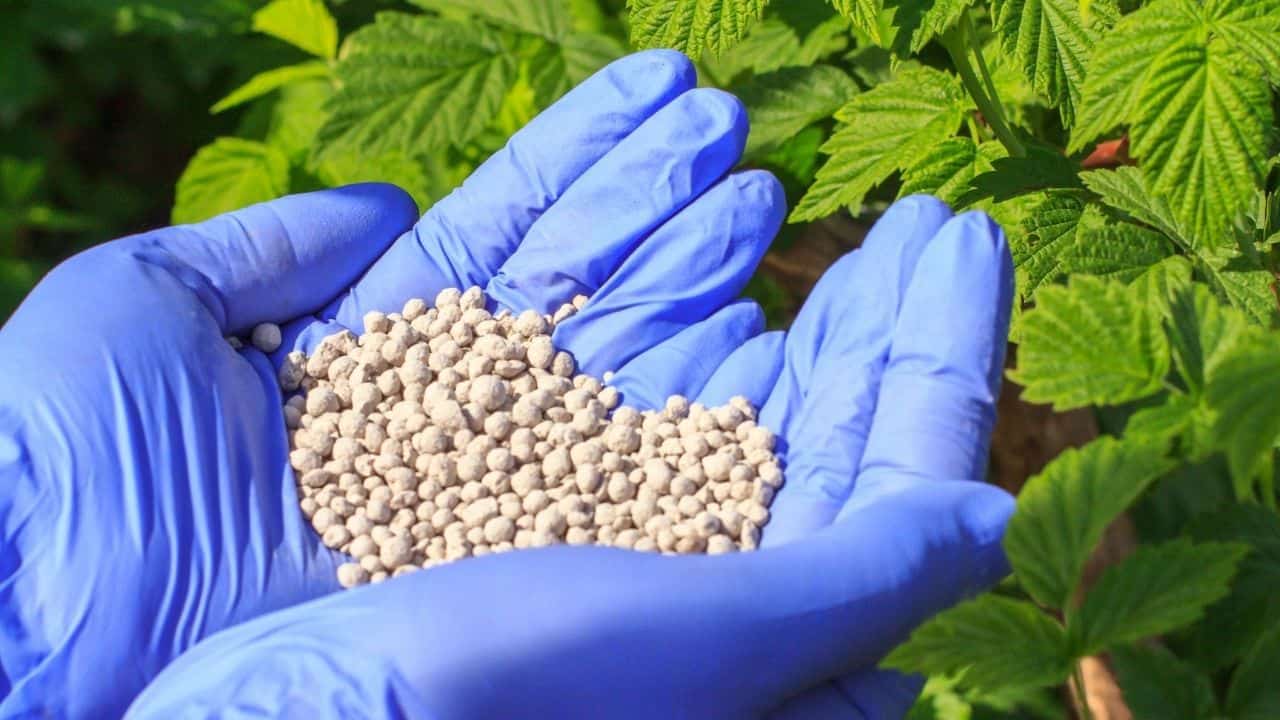
- Nutrient Requirements: Raspberry plants have specific nutrient needs to thrive and produce quality fruit.
- Consider Growth Stages: When fertilizing, consider the nutrient requirements at different stages of growth to promote healthy development and maximum productivity.
- Key Nutrients: Nitrogen, phosphorus, and potassium are essential for raspberry plants.
- Nitrogen: Supports leafy growth and overall plant vigor.
- Phosphorus: Aids in root development and flower formation.
- Potassium: Contributes to fruit quality and enhances disease resistance.
The following table explains fertilizing raspberry plants for optimal growth:
| Fertilizer Treatment | Application Rate (per plant) | Effect |
|---|---|---|
| 1. Nitrogen (N) | 1-2 ounces (28-56 grams) | Promotes vigorous vegetative growth and foliage. |
| 2. Phosphorus (P) | 0.5-1 ounce (14-28 grams) | Stimulates root development and fruit production. |
| 3. Potassium (K) | 0.5-1 ounce (14-28 grams) | Enhances overall plant health and disease resistance. |
| 4. Calcium (Ca) | 0.5 ounce (14 grams) | Helps prevent fruit disorders like blossom end rot. |
| 5. Magnesium (Mg) | 0.25 ounce (7 grams) | Essential for chlorophyll production and photosynthesis. |
A balanced fertilizer with the right ratio of these nutrients should be applied according to the specific needs of your raspberry plants. Over-fertilization can lead to excessive vegetative growth at the expense of fruit production, so it’s important to follow recommended guidelines and monitor the plant’s response to fertilization.
Mulching Your Raspberry Bed to Retain Moisture
Mulching your raspberry bed is a crucial step in retaining moisture and promoting healthy growth for your plants.
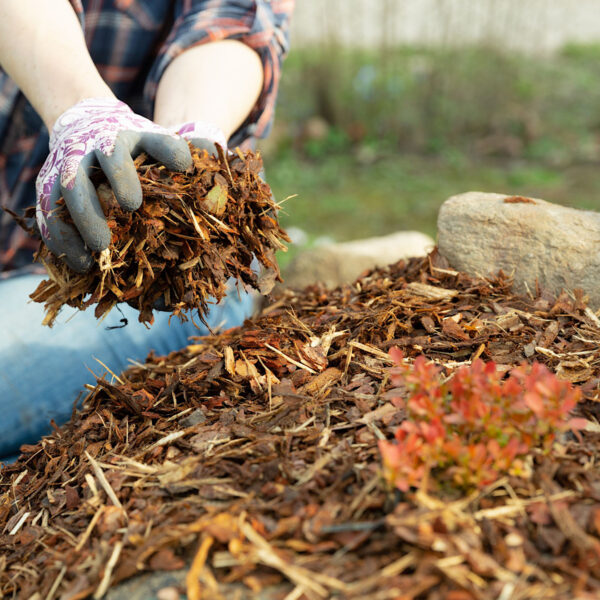
Remember, when applying mulch, avoid piling it directly against the stems of your raspberry plants to prevent rot and disease. By following these steps, you can create a more productive environment for your raspberry plants.
Protecting Your Raspberry Plants from Pests and Diseases
To effectively protect your raspberry plants from pests and diseases, it’s essential to implement proactive measures that can safeguard your crop and ensure a bountiful harvest. Here’s a table outlining the steps to protect your raspberry plants from pests and diseases:
| Step | Description |
|---|---|
| 1. Identify Pests and Diseases | Learn to recognize common pests such as aphids, fruitworms, Japanese beetles, mites, and leafhoppers, and diseases like botrytis fruit rot and powdery mildew. |
| 2. Regular Inspection | Regularly check your plants for signs of pests or disease. Early detection is key to effective treatment. |
| 3. Use Beneficial Insects | Introduce beneficial insects like ladybugs that feed on pests such as aphids. |
| 4. Use Natural Sprays | Use natural sprays like neem oil, insecticidal soap sprays, or Bacillus thuringiensis (Bt) to manage pests. |
| 5. Use Traps | Use traps for pests like Japanese beetles. |
| 6. Manual Removal | Manually remove pests like caterpillars from plants. |
| 7. Proper Watering | Water at the base of the plants to prevent leaf wetness and fungal diseases. |
| 8. Good Cultural Practices | Practice good cultural practices like proper spacing, pruning, and mulching to prevent pests and diseases. |
| 9. Clean Up | Clean up fallen fruits and leaves to reduce disease inoculum. |
Remember, healthy plants are less likely to be affected by pests and diseases. So, proper care and maintenance of your raspberry plants are crucial for their health and productivity.
Pruning Your Raspberry Canes for Maximum Yield
Pruning your raspberry canes is essential for ensuring maximum yield and healthy growth of your plants.Here’s a raspberry pruning instructions with some additional tips:
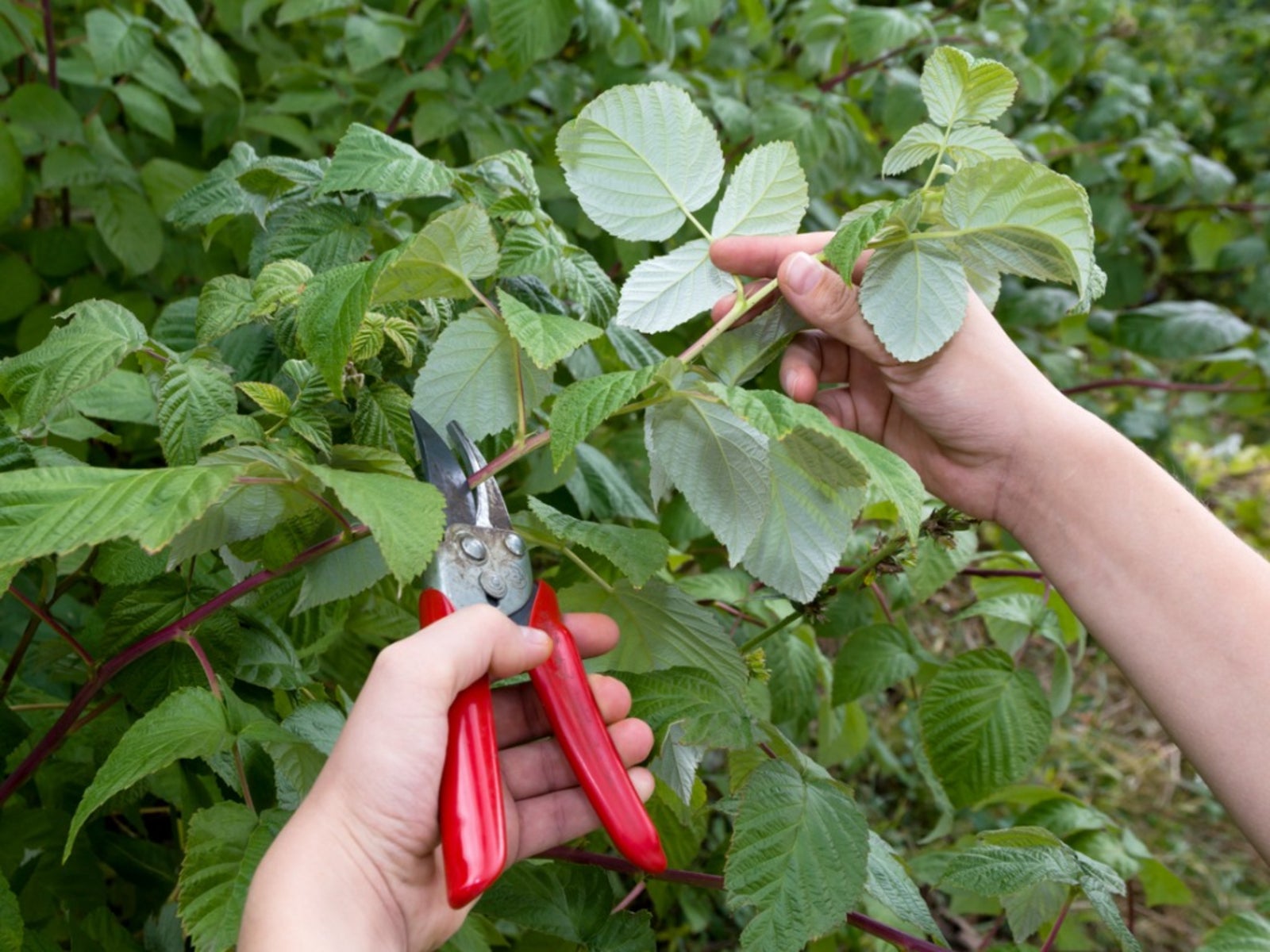
- Time your pruning: Prune your raspberries in late winter or early spring before new growth starts.
- Remove unhealthy canes: Get rid of any dead, damaged, or weak canes.
- Trim lateral branches: Cut back the side branches to about 12-18 inches long. Keep only the strongest and healthiest canes.
- Use clean tools: Always use sharp, clean pruning shears to make precise cuts and prevent diseases.
During the growing season:
- Monitor your plants: Keep an eye on your raspberry bushes as they grow and produce fruit.
- Remove spent canes: After fruit production, remove any old canes to encourage new growth for next year’s harvest.
Additional tips:
- Prevent overcrowding: Regular maintenance pruning helps prevent too many plants from growing too close together, which can lead to disease spread.
- Optimize your yield: By following these pruning techniques and paying attention to your plants’ needs, you can increase your raspberry yield and enjoy more fruit each year.
- Protect your plants: Consider using a net to protect your raspberries from birds and other animals.
- Fertilize: Use a high-quality fruit fertilizer to provide your plants with the nutrients they need to produce a bountiful harvest.
Remember, proper care and attention can lead to healthier plants and more delicious raspberries! Enjoy your gardening!
I’ve been using the Fiskars PowerGear2 Pruner and the Felco F-5 Classic Manual Pruning Shears for a long time and I’m extremely satisfied with both. The Fiskars pruner cuts through branches effortlessly and maintains its sharpness even after prolonged use. It’s comfortable to hold and the PowerGear technology truly makes it easier to prune. The Felco shears are equally impressive. They’re sturdy, reliable, and have stood the test of time. Both products offer excellent value for money and I would highly recommend them to anyone in need of high-quality gardening tools.
✅ Quality Construction: Made with premium steel blades finished with a rust-resistant, low-friction coating, ensuring durability and long-lasting sharpness.
✅ Ergonomic Design: Features an ergonomic handle designed to roll comfortably with the natural motion of your hand, providing easy and comfortable pruning.
✅ Versatility: Suitable for a variety of pruning tasks, including cutting through thick branches, thanks to its advanced mechanics and blade design.
✅ Customer Satisfaction: Highly rated and recommended by customers for its ease of use, sharpness, performance, and comfort, as evidenced by numerous positive reviews.
✅ Lifetime Warranty: Backed by a full lifetime warranty, providing assurance of product quality and durability.
❌ Shipping Fees: Depending on the seller and location, additional shipping and import fees may apply, potentially increasing the overall purchase cost.
❌ Limited Color Options: Available primarily in steel color, which may not appeal to customers looking for a wider range of aesthetic choices.
❌ Occasional Quality Concerns: While generally well-received, a few customers have reported issues with the ratchet mechanism and durability over time, suggesting occasional quality control issues.
✅ Ergonomic Design: Features a revolving handle for extra comfort, reducing wrist fatigue during prolonged use.
✅ Large Cutting Capacity: Offers a large cutting capacity and well-balanced weight for optimal gardening, making it suitable for various pruning tasks.
✅ Narrow Anvil Blade: The narrow anvil blade allows easy access to twiggy branches and ensures a close cut to the trunk.
✅ Swiss Precision: Manufactured by Felco, a company established in Switzerland over 70 years ago, known for its commitment to precision and quality.
❌ Rust Potential: Requires regular oiling along the blade to prevent rust, which may require additional maintenance.
❌ Size Limitation: Some users with small hands may find it less comfortable to use, especially during extended periods of pruning.
❌ Limited Availability: May not be readily available in all regions, and international shipping costs may apply.
❌ Replacement Parts: While parts are replaceable, obtaining replacements may require additional effort or cost.
Training Your Raspberry Canes for Better Support
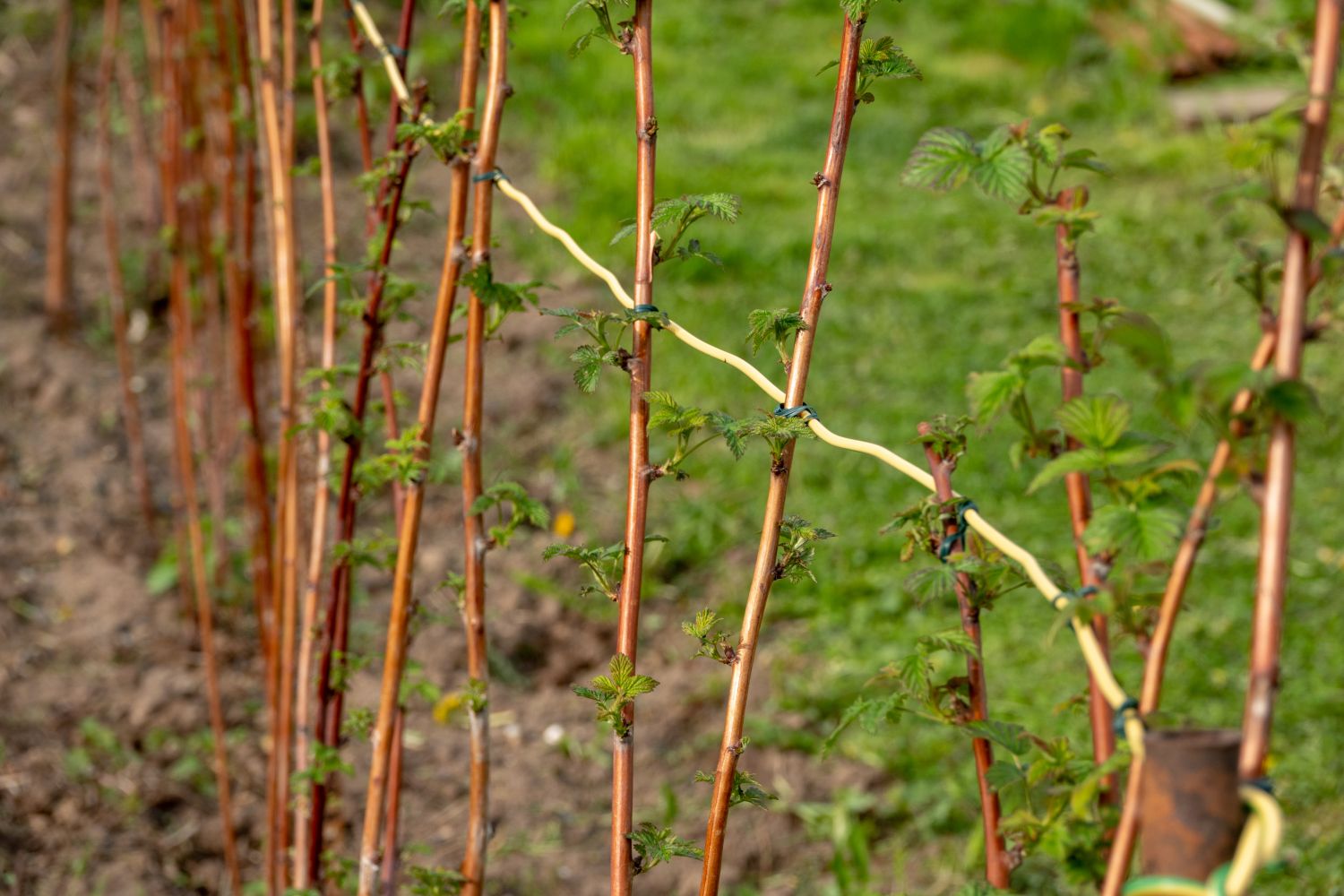
Training raspberry canes is essential for better support and improved fruit production. Here are some key points gathered from the search results:
- Pruning: Pruning raspberries involves cutting canes to the ground each year in late fall or early spring. This practice is simple and beneficial for both primocane- and floricane-fruiting raspberries.
- Trellising: Trellising raspberries is crucial for better support, light penetration, and air circulation, reducing disease and pest pressure. It also makes harvesting and maintenance easier. Constructing a trellis system with removable wires or twine at specific heights is recommended for both primocane and floricane varieties.
- Training Primocane Raspberries: Primocane-fruiting raspberries require little training. Construct a simple trellis system to keep canes upright by tucking them between wires as needed. This helps maintain clear aisles for easy harvest.
- Training Floricane Raspberries: Floricane-fruiting varieties need a robust trellis system for adequate support. Additional wires at different heights are often necessary to support fruiting-laterals lower on the cane. Separating fruiting canes from young primocanes in the canopy can make harvesting easier.
In summary, training raspberry canes through proper pruning and trellising techniques is crucial for plant health, fruit production, and ease of maintenance in both primocane- and floricane-fruiting varieties.
Remember, while raspberries don’t absolutely need to be trellised, doing so can provide several benefits such as better support for the canes, improved air circulation, easier harvesting, and a neater garden. Some raspberry varieties, such as dwarf or patio varieties, may not require trellising because they are naturally more compact and have shorter canes.
Harvesting Your Raspberries at the Right Time
When it comes to harvesting your raspberries, timing is key to ensure you enjoy the best flavor and texture from your fruit.

- Ripeness Indicators:
- Color: Raspberries should exhibit a deep, rich color when they’re ready for harvest. Red raspberries turn vibrant red, while black and purple varieties darken appropriately.
- Texture: Gently tug on the berries. They should detach easily from the plant without much effort. If they resist, they might not be fully ripe.
- Plumpness: Ripe raspberries are plump and juicy. Avoid picking shriveled or underdeveloped ones.
- Avoid Rushing:
- Patience is key! Don’t rush the harvesting process. Waiting until the berries are fully mature ensures the best flavor.
- Picking too early may result in tart or bland berries that haven’t reached their full sweetness potential.
- Harvest Regularly:
- Raspberries don’t ripen all at once. They mature gradually.
- Check your plants every few days during peak harvest season. This way, you’ll gather ripe berries promptly and prevent overripening.
- Peak Harvest Season:
- The exact timing depends on your raspberry variety and local climate.
- Generally, summer-bearing raspberries peak from late June to early August, while fall-bearing varieties produce fruit from late August to October.
- Morning Harvest:
- Harvest raspberries in the morning when they’re cool and fresh.
- Avoid picking during the hottest part of the day, as heat can affect fruit quality.
- Gentle Handling:
- Handle raspberries with care to prevent bruising.
- Place harvested berries in a shallow container to avoid crushing them.
Remember, each plump, sun-kissed raspberry carries the essence of your hard work and dedication. Enjoy the sweet rewards of your home-grown fruit! 🍓🌿
Storing Your Raspberry Harvest for Longevity
Once you have successfully harvested your raspberries, proper storage is essential to prolong their freshness and flavor.
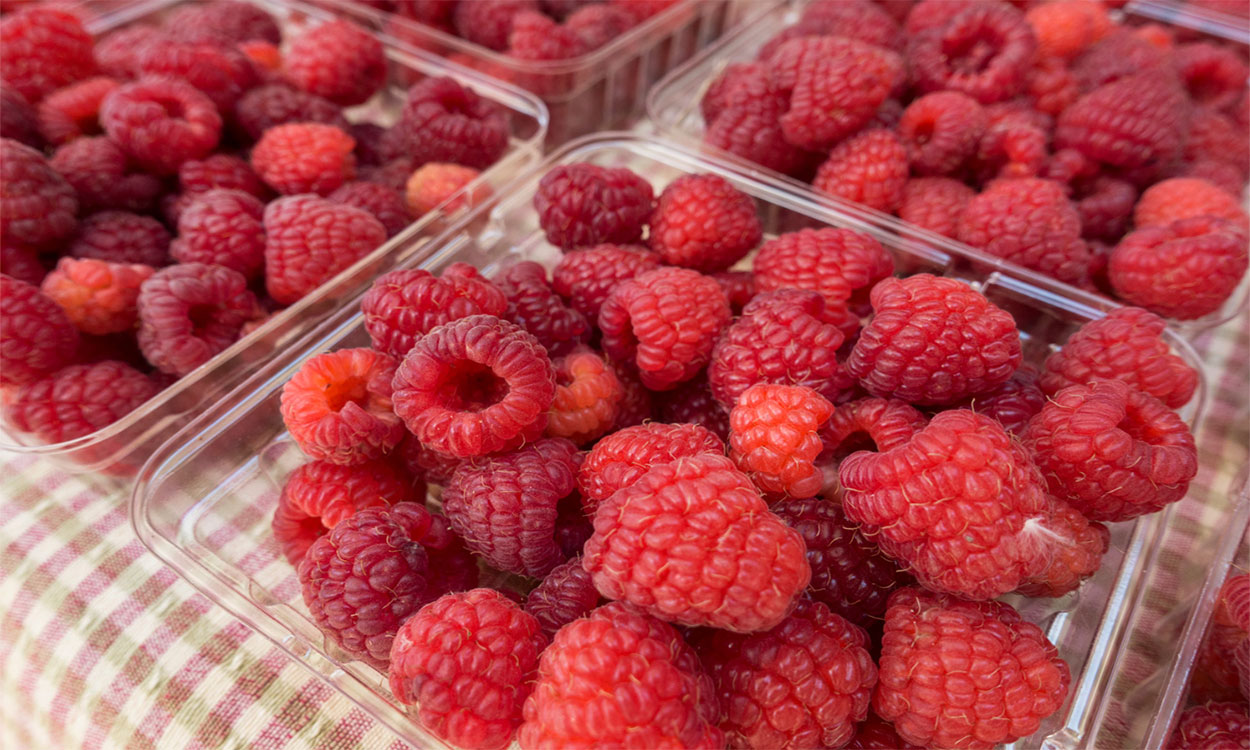
- Single Layer Placement:
- Gently place the raspberries in a single layer on a tray or container.
- Use a paper towel-lined surface to absorb excess moisture.
- Inspect and Remove:
- Check each berry for any signs of damage, mold, or overripeness.
- Remove any affected berries promptly to prevent them from spoiling others.
- Breathable Container:
- Store the raspberries in a breathable container to maintain proper airflow.
- Options include clamshell containers or perforated plastic bags.
- Refrigeration:
- Place the container of raspberries in the refrigerator.
- The ideal temperature range is 32°F to 40°F (0°C to 4°C).
- Avoid Washing:
- Do not wash the raspberries until you’re ready to consume them.
- Moisture can lead to mold growth and spoilage.
- Consume Promptly:
- Raspberries stored this way can last up to one week in the refrigerator.
- Enjoy their delicious taste while they’re fresh!
Remember, each juicy raspberry holds the essence of your gardening efforts. Treat them gently, and they’ll reward you with their delightful flavor! 🍓🌿
I recently purchased the Prepworks by Progressive Berry Keeper and it has been a game-changer for my berry storage needs. This compact and cleverly designed container has made storing and preserving my fresh berries easier than ever.The Berry Keeper is surprisingly spacious despite its compact size.
One of the standout features is the stackable insert tray that layers the berries, preventing bruising and keeping them fresh for longer. This feature alone has saved many of my berries from premature spoilage.The Berry Keeper is also very easy to clean and is dishwasher safe, which is a huge plus for me. The clear, press-in lid with a printed storage guide is a thoughtful addition, making it easy to know how to store different types of produce.
In conclusion, the Prepworks by Progressive Berry Keeper is a fantastic solution for anyone looking to extend the life of their fresh berries. It’s a small investment that pays off by reducing waste and saving money in the long run. Highly recommended for all berry lovers out there! 🍓
- Retains Food Freshness: The berry keeper effectively stores delicate berries, preventing them from spoiling quickly.
- Prevents Bruises: Its stackable insert tray helps prevent bruising, ensuring the fruits stay fresh for a longer period.
- Adjustable Vent: The adjustable vent regulates air circulation, maintaining optimal conditions for fruit storage.
- Multifunctional: It features a produce storage guide for easy reference and can double as a colander when the bottom lid is removed.
- Dishwasher Safe: The berry keeper is top rack dishwasher safe, allowing for convenient cleaning.
- Limited Capacity: It can only hold up to one pint (2 cups) of berries, which may not be sufficient for larger households or those who frequently buy in bulk.
- Size Constraints: Some users find it too small for certain types of fruit, such as cherries or citrus fruits, limiting its versatility.
- Not Ideal for All Fruits: While effective for berries, it may not be suitable for larger fruits or those with irregular shapes, limiting its usability in various scenarios.
- Durability: There are occasional reports of the product not being as durable as expected, with concerns about longevity under regular use.
Troubleshooting Common Raspberry Growing Issues
- Powdery Mildew: This is a fungal disease that looks like white powder on leaves. It can harm your plants and reduce fruit production.
- Solution: Improve air circulation by pruning overcrowded growth. Avoid watering from above as it can promote fungal growth. Use fungicides that are specifically for powdery mildew control.
- Root Rot: This is caused by soilborne pathogens like Phytophthora or Pythium. It can cause wilting leaves, stunted growth, and overall decline in plant health.
- Solution: Plant raspberries in well-draining soil and avoid overwatering. If you detect root rot, remove and dispose of infected plants promptly to prevent further spread. Rotate crops and practice good sanitation to reduce the risk of root rot in future seasons.
Remember, a little care and attention can go a long way in keeping your raspberry plants healthy and productive. Happy gardening!
Connecting with Other Raspberry Growers for Support and Advice
Connecting with fellow raspberry growers is a fantastic way to enhance your raspberry cultivation experience. Here are some practical points on how to engage with other enthusiasts and benefit from their knowledge:
- Online Forums and Communities:
- Join online forums dedicated to gardening, specifically raspberry cultivation. Websites like GardenWeb, Reddit, or specialized gardening forums offer a wealth of information.
- Participate in discussions, ask questions, and share your experiences. You’ll find a supportive community ready to help.
- Social Media Groups:
- Look for Facebook groups, Instagram accounts, or Twitter hashtags related to raspberries.
- Follow experienced growers, share your progress, and learn from their posts and interactions.
- Local Gardening Clubs:
- Attend local gardening club meetings or workshops. These gatherings often feature guest speakers who share their expertise.
- Connect with fellow gardeners face-to-face and exchange tips.
- Raspberry-Related Events:
- Keep an eye out for gardening expos, plant sales, or fruit festivals in your area.
- Attend workshops, talks, and demonstrations by experts. You’ll meet fellow enthusiasts and gain valuable insights.
- Collaborative Learning:
- Share your experiences with others. What worked well for you? What challenges did you face?
- Be open to learning from different perspectives. Everyone has unique insights to offer.
- Online Courses and Webinars:
- Explore online courses or webinars specifically focused on raspberry cultivation.
- Learn from professionals and stay updated on the latest techniques.
Remember, the joy of gardening lies not only in the harvest but also in the connections you build along the way. Happy raspberry growing! 🌱🍓
Watch video for more information:
FAQ
How can I tell if my raspberry plants are getting enough water?
You can check the moisture level of the soil by sticking your finger into the ground near the plants. If the soil feels dry, it’s time to water your raspberries.
Can I use any type of fertilizer on my raspberry plants?
It’s best to use a balanced fertilizer specifically formulated for berry plants to ensure they get the nutrients they need for optimal growth.
What is the best way to protect my raspberry plants from pests and diseases?
You can use natural methods such as introducing beneficial insects, practicing good garden hygiene, and using organic pesticides to keep pests and diseases at bay.
When should I prune my raspberry canes for maximum yield?
It’s recommended to prune your raspberry canes in late winter or early spring before new growth begins to promote better fruit production.
How can I connect with other raspberry growers for support and advice?
You can join online forums, social media groups, or local gardening clubs to connect with fellow raspberry growers and exchange tips, advice, and experiences.

Studied Agricultural Engineering-Plant Protection at University of California, Davis.
Head of Content writing team at Southelmontehydroponics.com

